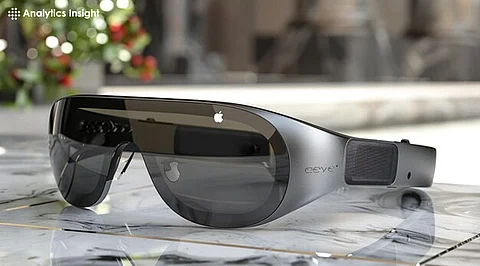

Smartglasses have moved beyond the novelty phase, now incorporating artificial intelligence to make life easier. Through March 2025, wearable technology provides real-time translation, augmented reality screens, and voice control, attracting technology-aware consumers and business leaders. The following article distills the best smartglasses that lead in AI functionality and daily use.
Ray-Ban Meta Smart Glasses combine classic looks with the newest AI. Co-designed by Meta and EssilorLuxottica, the glasses feature a 12-megapixel camera to capture images and video, which is transmitted wirelessly to smartphones. AI within the camera, leveraging Meta's Llama model, recognizes voice commands via a five-microphone system, enabling hands-free calls, listening to music, and asking the surroundings, such as identifying landmarks or reading signs.
Sound is excellent, courtesy of open-ear speakers that deliver sound without obscuring surrounding noise. Discretion is guaranteed at a weight of only 48 grams, but battery life is capped at up to four hours, with this increased via a charging case. Social media is awash with videos of users recording messages or taking snaps hands-free with ease, highlighting the combination of style and functionality that makes this model stand out.
Xreal Air 2 Pro leads the way in augmented reality with AI-driven features. Glasses project 130-inch virtual screen: ideal for gaming, films, or office use, via a light 75-gram frame. Electrochromic dimming does dynamic lens tinting for indoor or outdoor lighting, and AI eye movement tracking adjusts focus on the display for less eye strain on long sessions.
Voice commands, driven by a proprietary AI assistant, perform tasks such as directions or scheduling when paired with a computer or smartphone. Three-microphone noise cancellation provides seamless communication, a godsend for remote workers. Internet forums praise the immersive AR, with users loving its sharp 1080p rendering and ease of use, although a wired USB-C connection restricts stand-alone operation.
Google Glass Enterprise Edition 2 aims at professionals with AI for productivity. A 46-gram titanium frame accommodates a heads-up display, displaying such items as directions or blueprints - ideal for surgeons or technicians. The AI, being Google-ecosystem integrated, supports real-time transcription and translation, interpreting voice from a single microphone with sufficient noise filtering.
Eight hours of battery life is more than sufficient for long workdays, and a Snapdragon XR1 processor is fast. Android app support enables custom workflows, which business reviews have enjoyed. Viral videos show handless warehouse workers scanning inventory with the product, highlighting its particular popularity. The $999 price and business-focused focus, though, curtail the degree of common consumers who utilize it.
North Focals 2.0, acquired by Google in 2020, has a few basic AI capabilities. A tiny laser projector displays notifications, directions, or fitness data onto the lens, so only the wearer can notice it. AI interprets voice commands via a hidden microphone and responds to bone-conduction sound - silent but audible. Gesture control, including frame tapping, offers convenience.
Comfort is great at 40 grams, and a six-hour battery makes daily use no issue, charged from a custom puck. Social media buzz is all about its simplicity and effortless Alexa integration, though limited AR capabilities are a letdown. Production setbacks have fueled rumors, but early adopters are singing its quiet brilliance.
AI smartglasses are highly convenient. They can translate real-time languages, which can benefit tourists, such as being able to read a Japanese menu without issues. AR overlays enhance gaming or simulation, and voice assistants make things simpler, such as reminders or note-taking. Fitness tracking, such as steps or heart rate, is handy in frames such as Ray-Ban Meta, for sports users.
There remain issues, however. Battery life is unreliable, four to eight hours, requiring midday recharging. Cameras and microphones cause privacy concerns, fuelling internet discussion about etiquette on recording. Ray-Ban Meta prices of $299, or more than $1,000 for Xreal or Google Glass, are prohibitive. Compatibility is very smartphone-dependent, restricting independent functionality, and convenience is lost with long-term use for heavier devices.
AI-powered smartglasses promise an age of effortless wearables. Advances in battery life might boost usage, and slimmer frames might accelerate adoption. Apple's rumored entry might integrate Siri and AR in a thin package by 2026. Hype spreads virally as developers vow AI add-ons, such as emotion sensing or contextual alerts, pushing boundaries further.
Currently, Ray-Ban Meta, Xreal Air 2 Pro, Google Glass, and North Focals are at the forefront, each with its own strengths. For fashion, work, or play, each device redefines the boundaries for technology-enhanced vision, demonstrating the power of AI in small, wearable packages.
